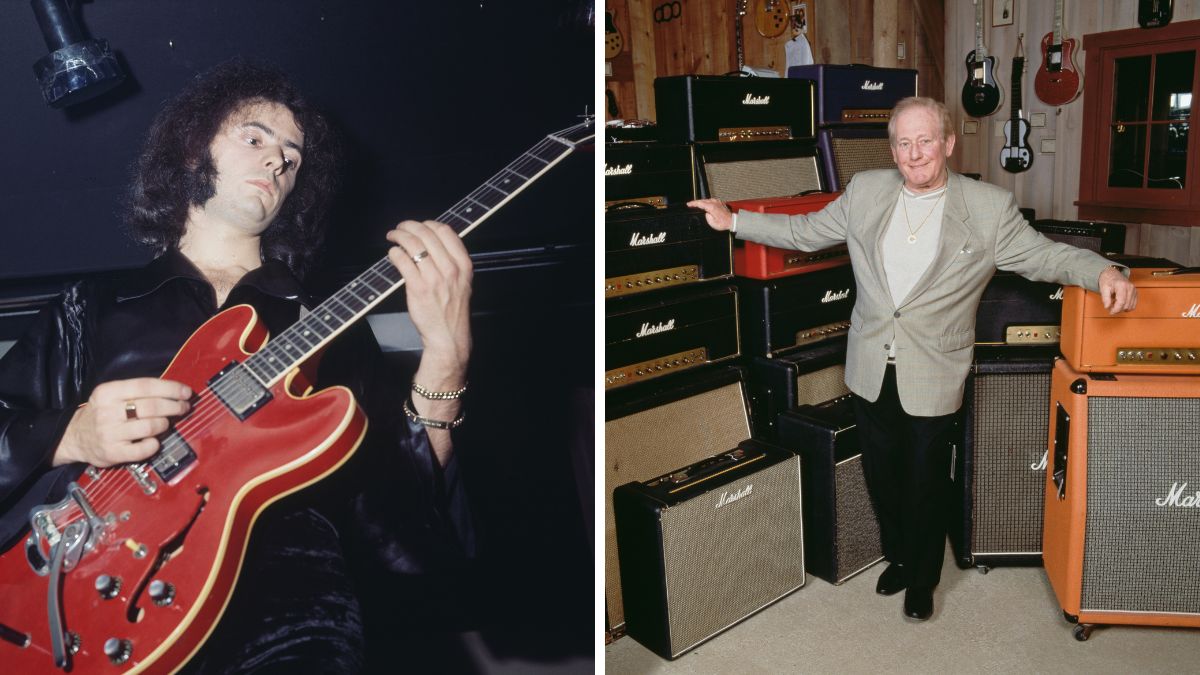“I went there with the intention of buying a Gretsch Jet Firebird. He said, ‘Forget the Gretsch. That’s a toy compared to the 335’”: Ritchie Blackmore recalls buying his first Gibson from amp pioneer Jim Marshall's music store
Blackmore used the Gibson ES-335 all throughout the '60s, from The Outlaws to Deep Purple’s 1970 breakthrough album, In Rock

Before Marshall Amplification, there was Jim Marshall, his business acumen, and his small music shop at 76 Uxbridge Road, Hanwell, just a few miles away from The Ealing Club – the birthplace of The Rolling Stones and British rhythm and blues, and a hot spot for musicians.
“Jim was a very affable kind of guy,” recalls Blackmore in an interview at his tavern in the States. “He knew nothing about amplifiers, yet it's funny to see today, every band has got a Marshall amplifier, and that was built in the beginning by someone who knew nothing about amplifiers.”
“He was a drum teacher. I always find that slightly amusing!” he quips.
Ritchie Blackmore was one of Marshall’s early customers who later made a name for themselves. Recently, he recalled how the amp pioneer persuaded him to buy a Gibson ES-335 when he was around 16. This guitar accompanied him throughout the '60s, from The Outlaws to Deep Purple’s 1970 breakthrough album, In Rock.
“I went there with the intention of buying a Gretsch Jet Firebird. After half an hour of a sales pitch, he said, ‘Forget the Gretsch. That’s a toy compared to the 335.’ I went, ‘But I want the Gretsch. I love the Jet Firebird.’ He said, ‘You'll appreciate the 335 Gibson much more later in life.’ [So] I walked out with a Gibson!”
Blackmore goes on to say he paid 30 shillings – which was significant money at the time – for the guitar, plus another 30 shillings for an amp, on hire purchase, putting a dent in his wallet. “So I was left with next for nothing to live on for the week!”
In a classic 1991 Guitar World interview, the former Deep Purple guitarist explained why it was so difficult to eventually switch from Gibsons to Fenders between the band’s In Rock and Fireball eras.
Get The Pick Newsletter
All the latest guitar news, interviews, lessons, reviews, deals and more, direct to your inbox!
“It's much easier to flow across the strings on a Gibson. Fenders have more tension, so you have to fight them a little bit. I had a hell of a time. But I stuck with the Fenders because I was so taken with their sound, especially when they were paired with a wah-wah.”
In recent Deep Purple news, Simon McBride pinpointed the Ritchie Blackmore lick he found most difficult to learn.
Janelle is a staff writer at GuitarWorld.com. After a long stint in classical music, Janelle discovered the joys of playing guitar in dingy venues at the age of 13 and has never looked back. Janelle has written extensively about the intersection of music and technology, and how this is shaping the future of the music industry. She also had the pleasure of interviewing Dream Wife, K.Flay, Yīn Yīn, and Black Honey, among others. When she's not writing, you'll find her creating layers of delicious audio lasagna with her art-rock/psych-punk band ĠENN.
“Even the thought that Clapton might have seen a few seconds of my video feels surreal. But I’m truly honored”: Eric Clapton names Japanese neo-soul guitarist as one to watch
“You better be ready to prove it’s something you can do”: Giacomo Turra got exposed – but real guitar virtuosos are being wrongly accused of fakery, too












